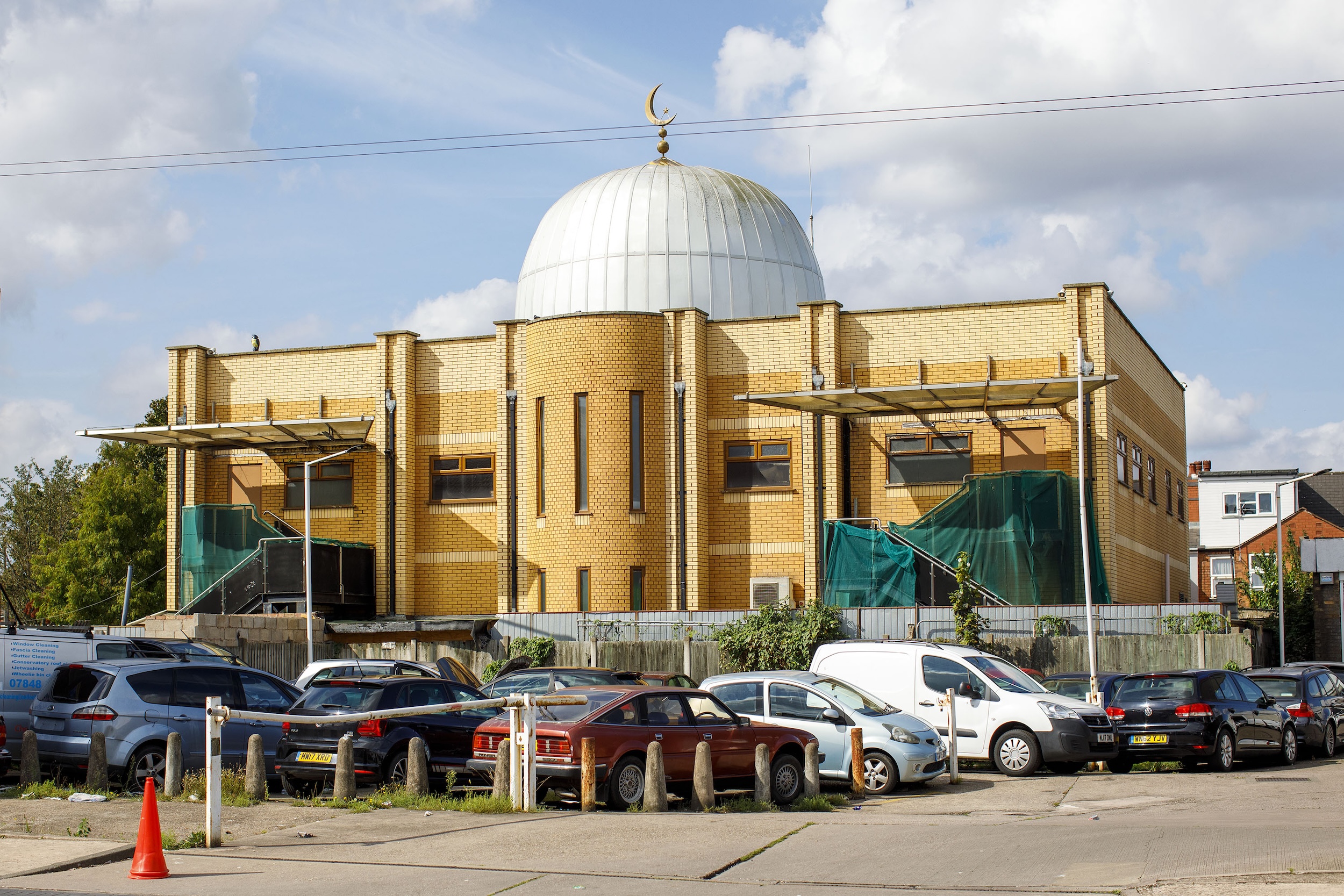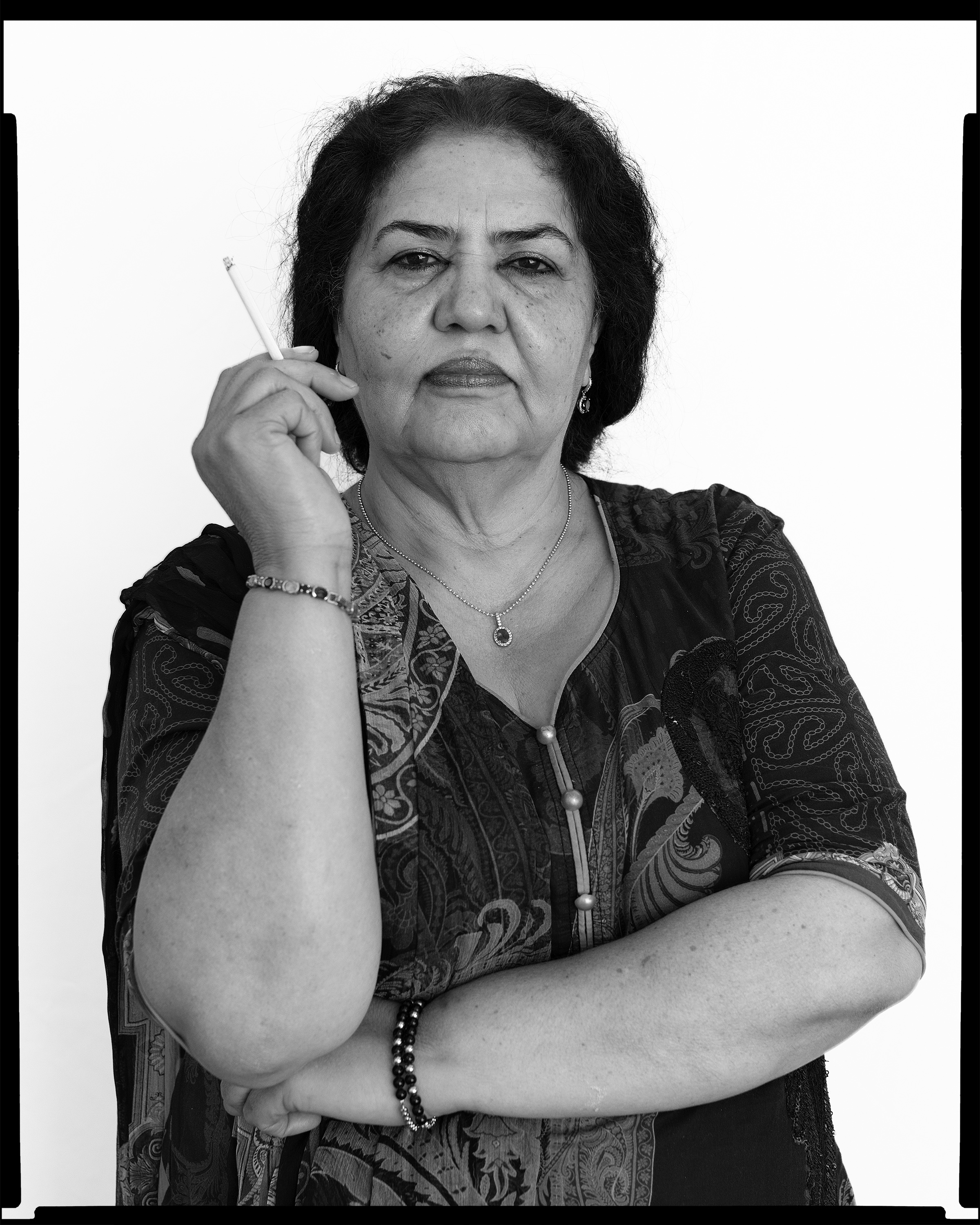All images © Mahtab Hussain
What Did You Want to See? at Ikon Gallery turns the lens on Birmingham’s Muslim community, reclaiming visibility through portraiture and architecture
Mahtab Hussain’s latest exhibition, What Did You Want to See?, at Birmingham’s Ikon Gallery, is a confrontational study of visibility, surveillance, and the act of looking – a subject Hussain knows well. “Muslims in Britain are often spoken about but rarely get to tell their own stories on their own terms,” he says. “My work challenges this by moving beyond victimisation and vilification, showing the richness, resilience, and complexity of our communities – our struggles, pride, humour, and everyday lives.” The show is a co-commission and curation by Photoworks for their 30th anniversary programme.
Hussain, whose practice has long interrogated identity, migration, and belonging, takes a step beyond portraiture in this project. His previous work, including You Get Me? (2008–2017) and Honest With You (2008–2018), explored the lived experiences of British South Asians through direct, intimate imagery. This time, the scope widens. “I was looking at the architecture, the marks people leave behind – the traces of existence that are often ignored or erased.”
At the heart of the exhibition is a systematic documentation of Birmingham’s mosques – 160 in total – photographed over the summers of 2023 and 2024. Presented in a rigid 16×10 grid, the collection recalls the typological studies of Bernd and Hilla Becher. Yet, unlike the Bechers’ detached industrial landscapes, Hussain’s work is personal. The images reveal a multiplicity of forms: grand, domed structures, converted terraced houses, former churches. Some are instantly recognisable as places of worship; others are subtle, almost hidden. The typology resists categorisation. “There’s no single way to define these spaces,” Hussain explains. “That’s important because the way Muslims are represented is often so one-dimensional.”
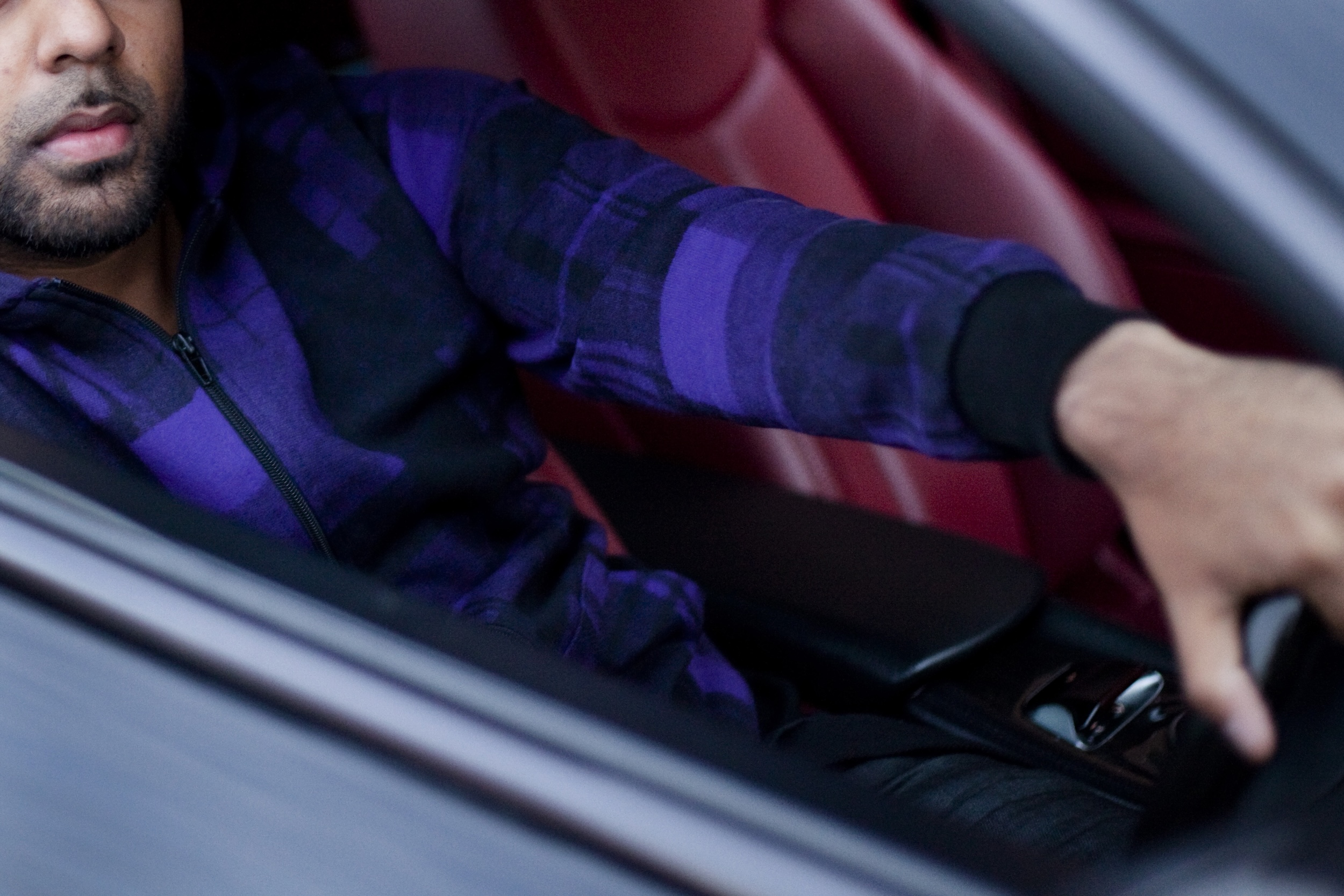
“People were reminded that they were being watched – forcing self-censorship and reinforcing the idea that we don’t belong”
Birmingham, home to one of the largest Muslim populations in the UK, has also been a site of targeted surveillance. In 2010, the government launched Project Champion, installing CCTV cameras in predominantly Muslim neighbourhoods under the guise of counterterrorism. When the project was exposed, the cameras were removed, but the damage was done. “That left a scar,” says Hussain. “People were reminded that they were being watched – forcing self-censorship and reinforcing the idea that we don’t belong.”
The exhibition confronts this history head-on. A central installation replicates a surveillance site, flipping the gaze. “Theories like Foucault’s panopticism reveal how surveillance modifies behaviour, people internalise scrutiny, regulating themselves even when no one is watching.
“This exhibition also flips the power dynamic – if surveillance casts Muslims as the watched, this show allows them to be the watchers. The audience is invited to look, to see these people, places, and stories without suspicion. It’s a chance to reconsider the act of looking itself; who holds the gaze, who is given the right to look freely, and who is scrutinised? In a world where Muslims have been excessively observed and misrepresented, this work resists and reclaims visibility.”
Portraiture remains a crucial element. The black and white photographs of Birmingham residents – displayed alongside the mosque typology – disrupt easy narratives. There’s a man in a car mechanic’s uniform, grease on his hands; a woman, cigarette in hand, staring back; a mother and daughter, arms entwined. “These are not tokenistic representations,” Hussain states. “They are people in all their complexity, their contradictions.”
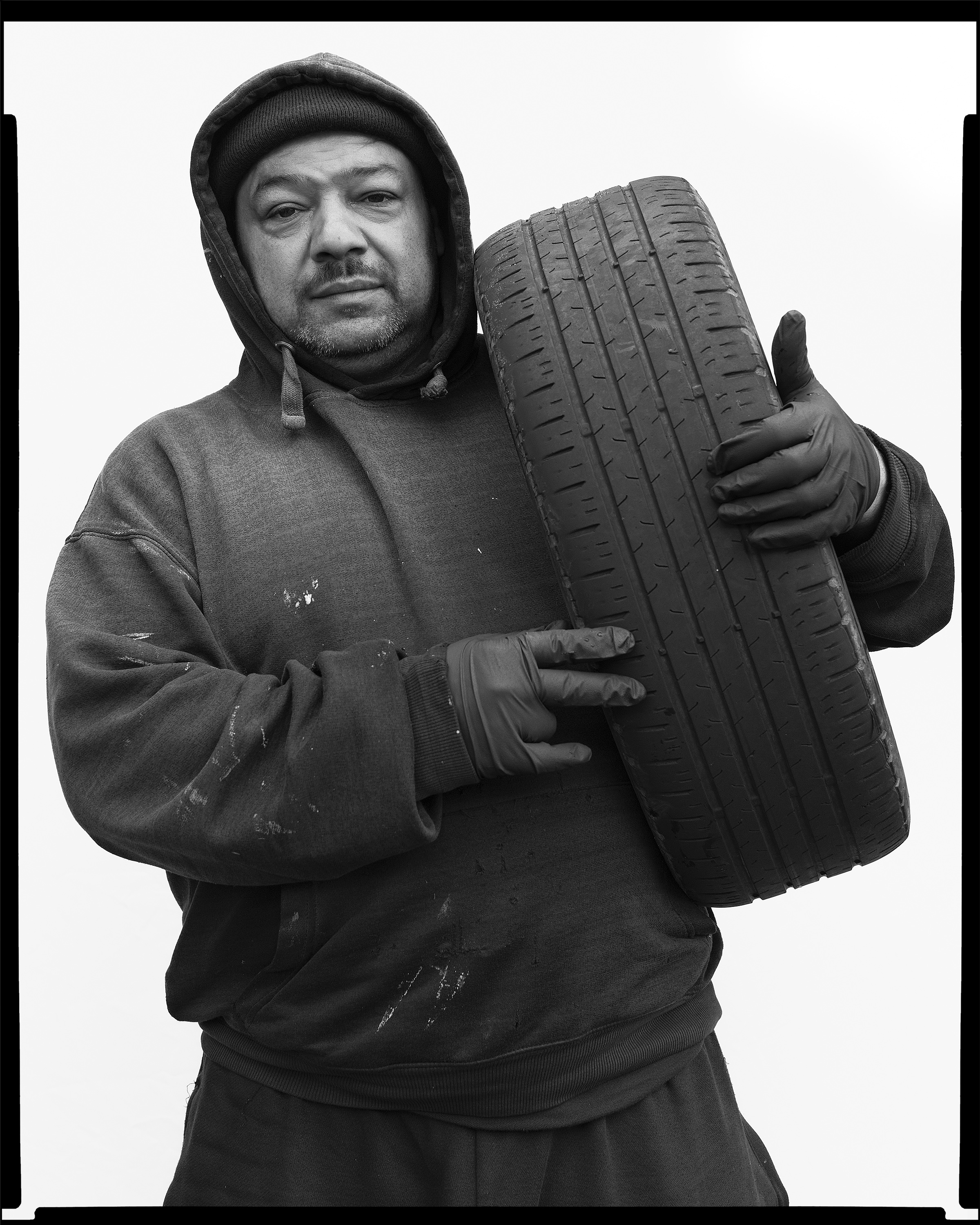
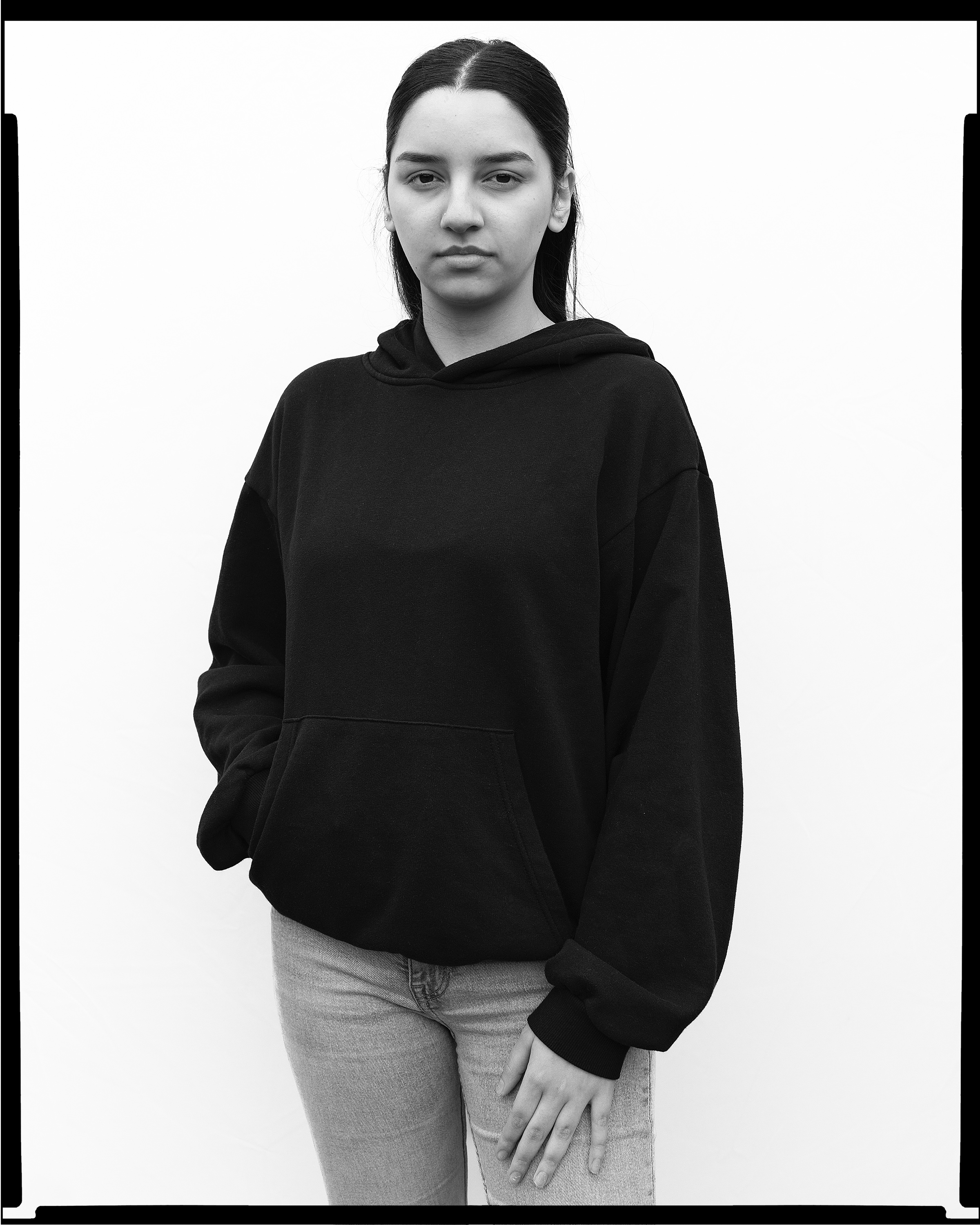
Getting these images was not simple. “Photographing Muslim communities is difficult because there’s a deep level of mistrust,” he explains. “And it’s justified. Years of media misrepresentation, of being watched and scrutinised, have made people wary.” The process was slow – built on conversation, trust. “It wasn’t just about taking an image. It was about asking, ‘What does it mean for you to be seen in this way?’”
Hussain also revisited subjects from past projects. One portrait features Shaf, a local tyre shop owner Hussain first photographed years ago. “People like Shaf, who owns a tyre shop and has had that business for over 25 years. I made portraits of him years ago, but they never felt strong enough to include in my other work. This time, I was able to make an image that felt right to truly celebrate him.”
Interwoven with the photographs are acts of resistance – postcode tags scrawled across the gallery walls. “Once, I saw them as symbols of gang culture, reinforcing divisions. Now, I see them as declarations of existence, a way of marking space with pride,” Hussain explains. “In a city that often marginalises certain voices, they act as a form of resistance—making the invisible visible. Where the city enforces control through surveillance and policing, these markings push back, asserting a different kind of power.”
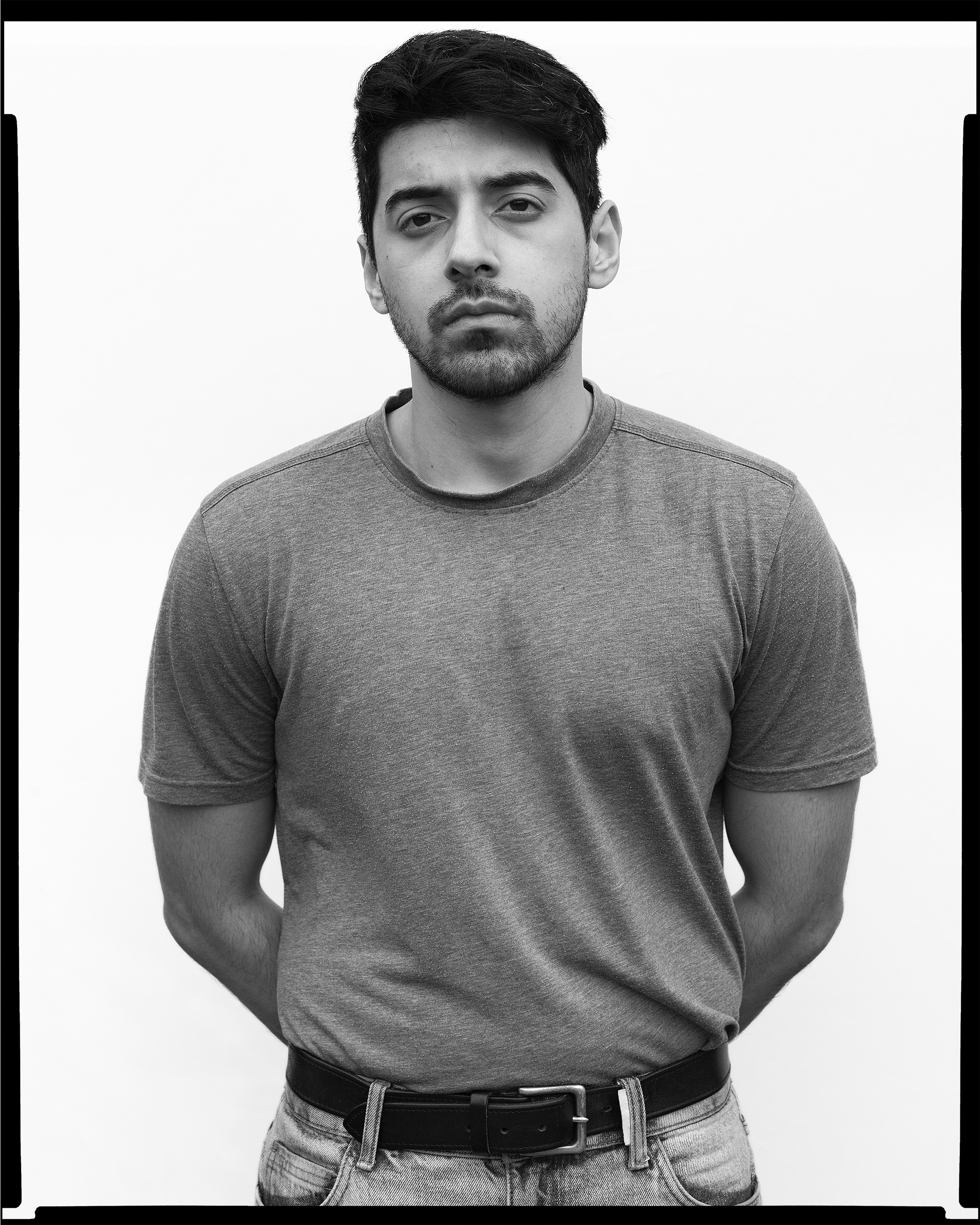
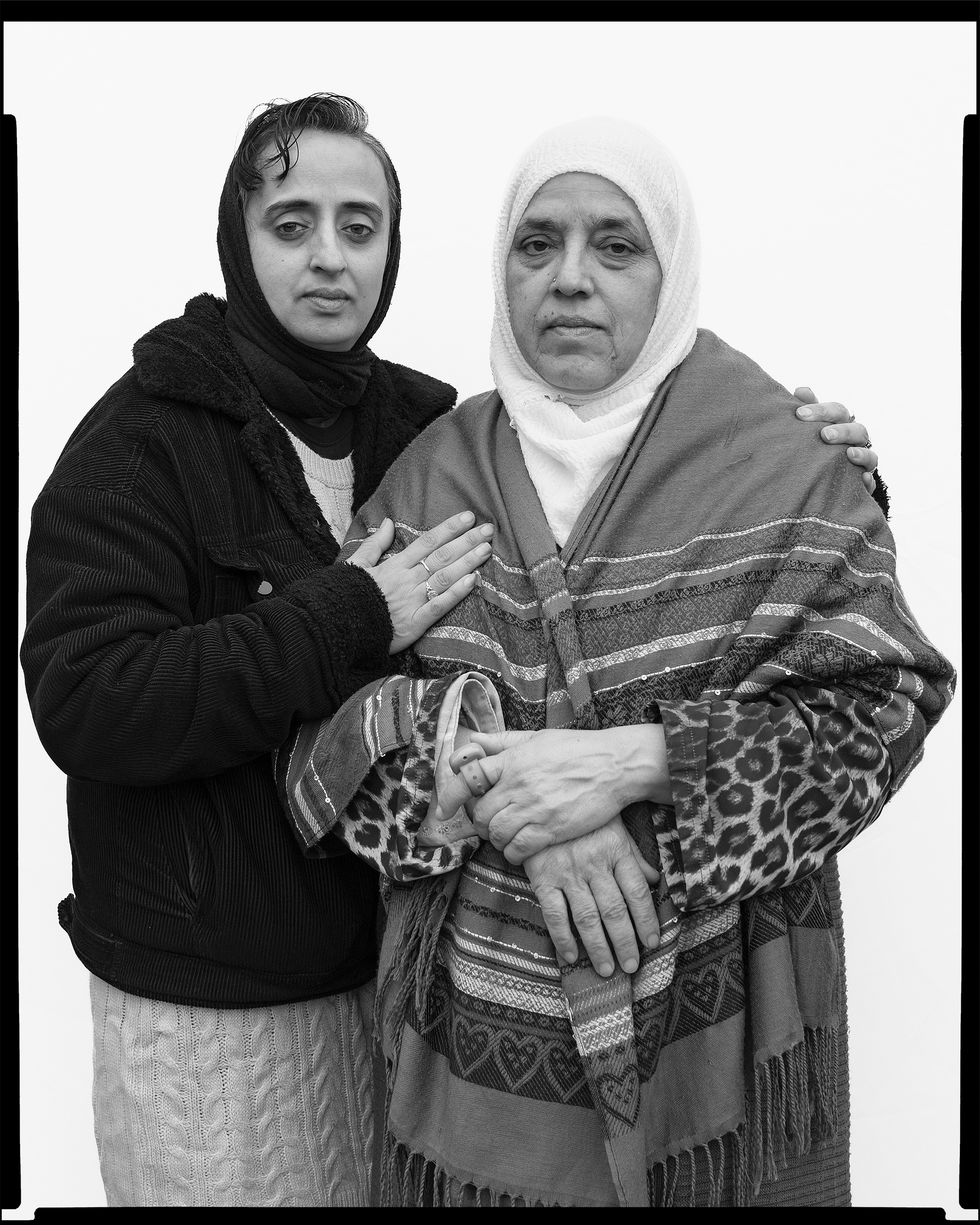
A separate installation, An Act of Civil Declaration (2025), features statements from Birmingham’s Muslim residents – responses to the stereotypes and expectations placed upon them. Alongside this, a video work, made in collaboration with writer Guy Gunaratne, explores Muslim life beyond the political frame: social gatherings, sport, the mundane yet vital rhythms of community. “There’s so much joy in these spaces,” Hussain notes. “That’s something we rarely see.”
Having this work at Ikon is significant. Hussain grew up in Birmingham, and his relationship with the gallery spans more than a decade. “It’s incredibly rewarding to have my work showcased at such a significant platform, particularly at Ikon Gallery, where I’ve had a relationship spanning over 10 years. Ikon has been crucial in supporting my development as an artist, and having my first major show in Birmingham feels like a full-circle moment.” Hussain is now working on a project with The Line in London called Please Take A Seat, which opens this spring.
“It’s a sculptural piece that encourages public interaction and reflection. It’s a reinterpretation of a Victorian park bench, featuring engraved motifs and a prompt that invites people to sit, engage with the piece, and make their own portrait. This work is about creating moments of stillness and conversation in public spaces, and it’s been an exciting way to connect art with the community.”
